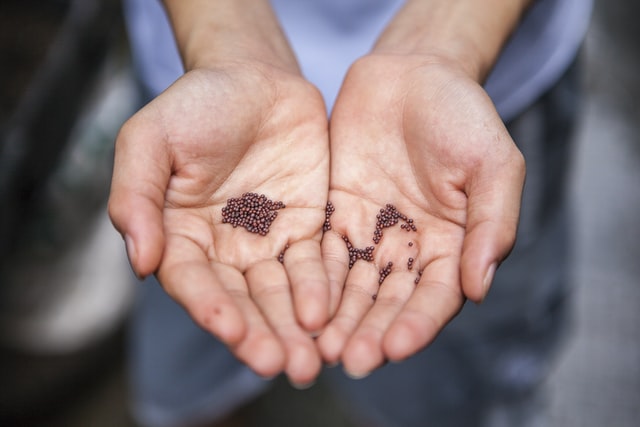By Michael Jenkins

It all starts with seeds, soil, and water. They’re the heart and soil of any garden, and the basis for all that comes later. While we’ve talked about about soil and water in other blogs, we’re going to turn our attention to seeds today. Specifically, we’re going to talk about saving seeds from your current plants for next year’s garden. For many of you it’s still early summer and next year may seem a long way away, but now really is the time to start thinking about collecting seeds, saving seeds, and storing seeds until you need them.
It’s a complicated topic, which is why this is the first in a series. Let’s take a look at the basics of saving seeds!
Choosing the Right Seeds
Not all seeds are created equal. While seeds all work in the same general way, the seeds you save should be chosen carefully. It’s best to save seeds from open pollinated varietals of the target plant. Open pollinated varieties, or Ops, are varieties of a given plant with which will breed true as long as they’re pollinated by the same variety. This means they retain desired traits—color, size, flavor/taste—better than hybrid varieties. Hybrids are cross bred from two different varieties of the plant, and after the first generation they will often change into less desirable forms and traits.
This has a few ramifications for a home gardener who wants to save seeds. Not only will you need to choose carefully when planting and later saving seeds by picking the right varietals, you’ll also want to avoid the risk of cross pollination. This involves arranging your garden such that plants which open pollinate are less likely to do so with other varietals. Plants that self-pollinate, which include tomatoes, peppers/chilies, eggplant, beans, peas, and lettuce, are far less likely to cross pollinate by accident so a bit of space between plants or beds of different varietals is all you need. Wind pollinated plants, including cucumbers, gourds, pumpkins, squash, melons, and corn, are a bit trickier to protect from inadvertent cross-pollination. If you can’t provide quite a bit of distance between plants, you’ll want to limit them to one varietal per season if you want to save seeds and have them breed true later.
This may seem like a lot, but it really only takes a little planning and perhaps some coordination with the neighbors to make it happen. Self-pollinated plants are probably the easiest place to start for those new to saving seeds, as they’re easier to breed true, tend to provide huge amounts of seeds per fruit, and are simple to collect.
Speaking of collecting seeds . . .
Gathering Seeds for Saving
When and how do you collect seeds in order to save them for later. While that varies from plant to plant and we’ll cover it at length in a later blog, there are a few general tips that work for most species. You’ll want to save seeds from the healthiest, most productive plants—that is, the ones that show the best traits to pass on to their offspring. You’ll also want to allow the seeds to reach full maturity before collection. This generally involves leaving the fruit on the vine long past the point when it is “ripe” for human use. So with beans and peas, letting them wait till the pod has dried out. For fruiting plants like tomatoes and peppers, letting the fruit stay on the plant till it is past ripe and ready to drop on its own. Mature, ready to collect seeds will be full sized, with a fully developed hard seed coat or darker outer covering. When you see this start to happen, that’s the time to start gathering seeds.
So what happens after you gather seeds in order to save them for later? That’s one of the thing’s well be covering in Part Two, so stay tuned!


Leave a comment